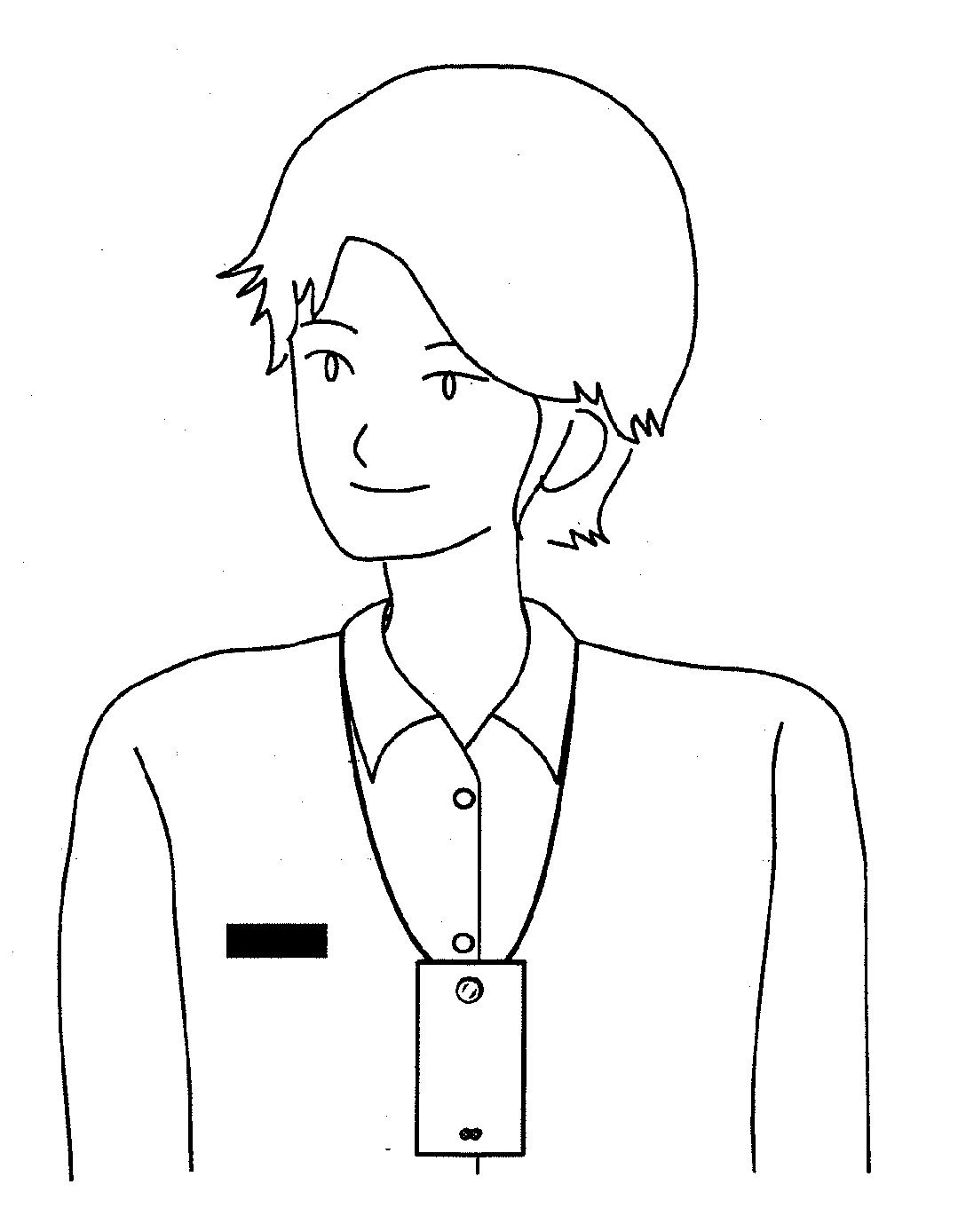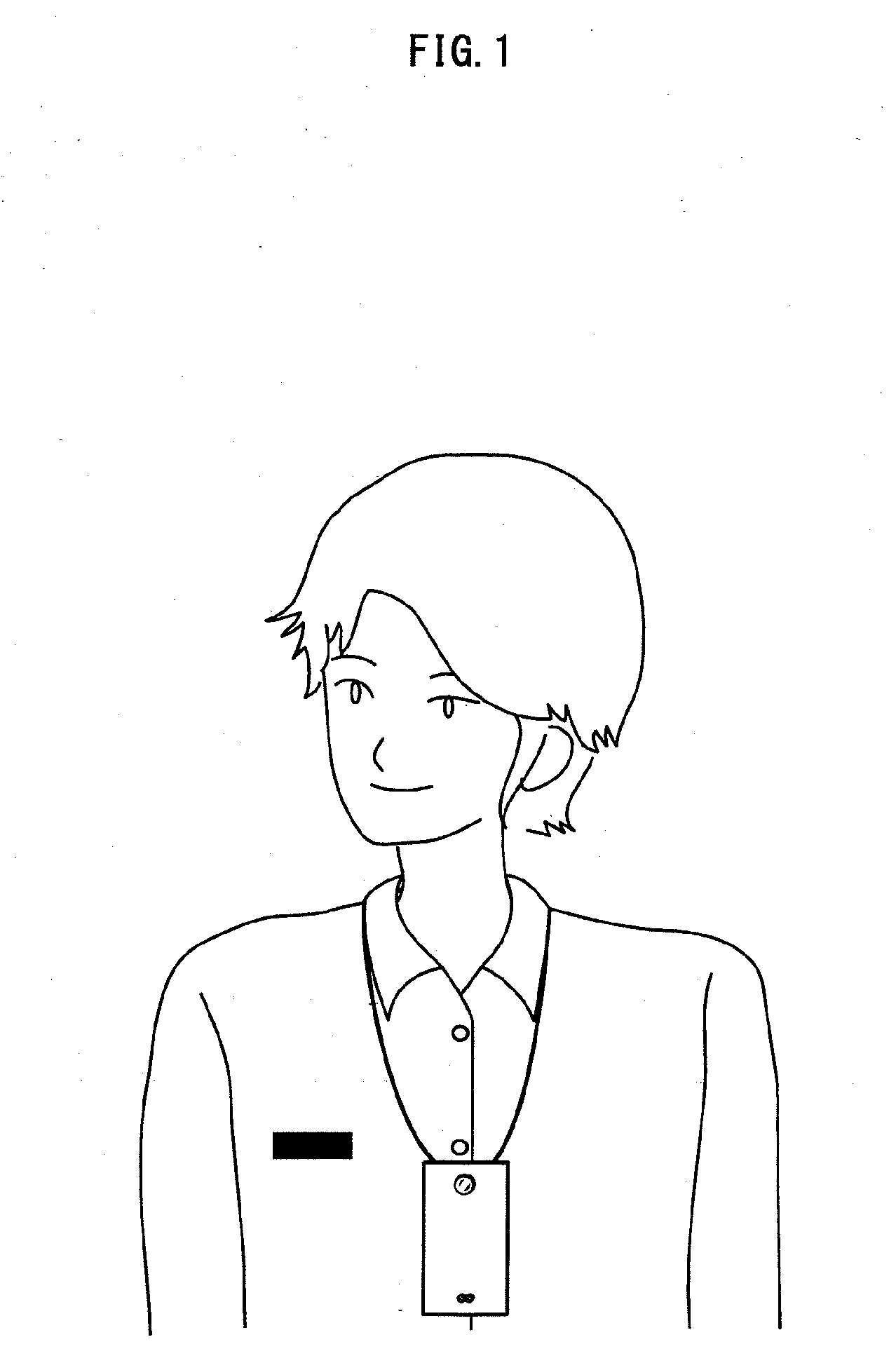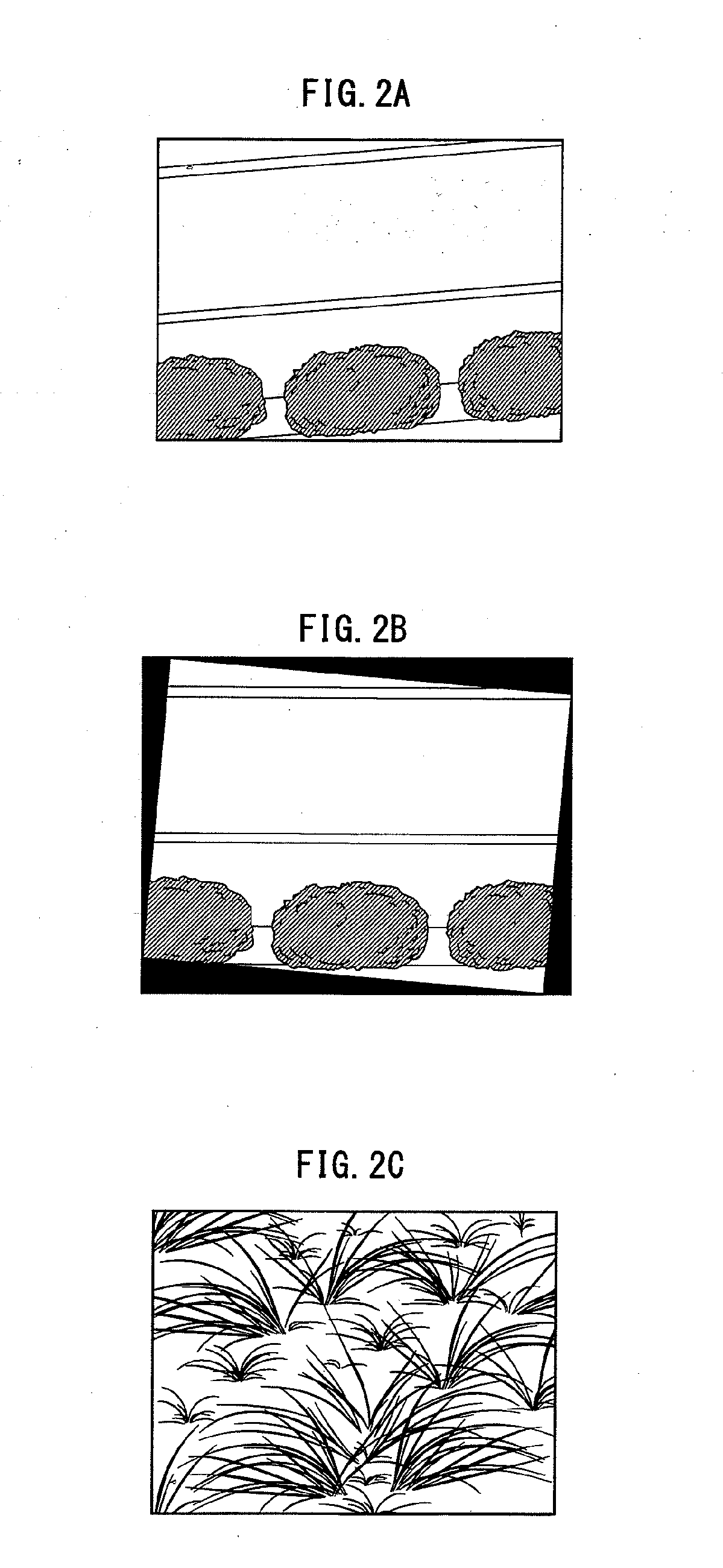Image processing device, image processing method, image processing program, recording medium with image processing program recorded therein, and image processing processor
- Summary
- Abstract
- Description
- Claims
- Application Information
AI Technical Summary
Benefits of technology
Problems solved by technology
Method used
Image
Examples
Embodiment Construction
[0088]The present embodiment describes a case where the image processing device that is an example of the present invention is included in a wearable terminal, and corrects a tilt of the image captured by a camera.
[0089]The wearable terminal is a terminal worn by the user (e.g. by dangling it around the neck) at all times, as shown in FIG. 1. The wearable terminal includes a camera, for example, for recording the daily life of the user. Images are captured by the camera without especially needing the operation by the user. Accordingly, images are likely to be captured at timing that is not expected by the user. When an image is captured with the camera tilted off the horizontal, for example, the captured image tilts as shown in FIG. 2A. Since such a tilted image does not look good, the user usually tries to correct the direction in which the object is oriented by tilting the captured image as shown in FIG. 2B. The present invention is an image processing device that estimates a righ...
PUM
 Login to View More
Login to View More Abstract
Description
Claims
Application Information
 Login to View More
Login to View More - R&D
- Intellectual Property
- Life Sciences
- Materials
- Tech Scout
- Unparalleled Data Quality
- Higher Quality Content
- 60% Fewer Hallucinations
Browse by: Latest US Patents, China's latest patents, Technical Efficacy Thesaurus, Application Domain, Technology Topic, Popular Technical Reports.
© 2025 PatSnap. All rights reserved.Legal|Privacy policy|Modern Slavery Act Transparency Statement|Sitemap|About US| Contact US: help@patsnap.com



